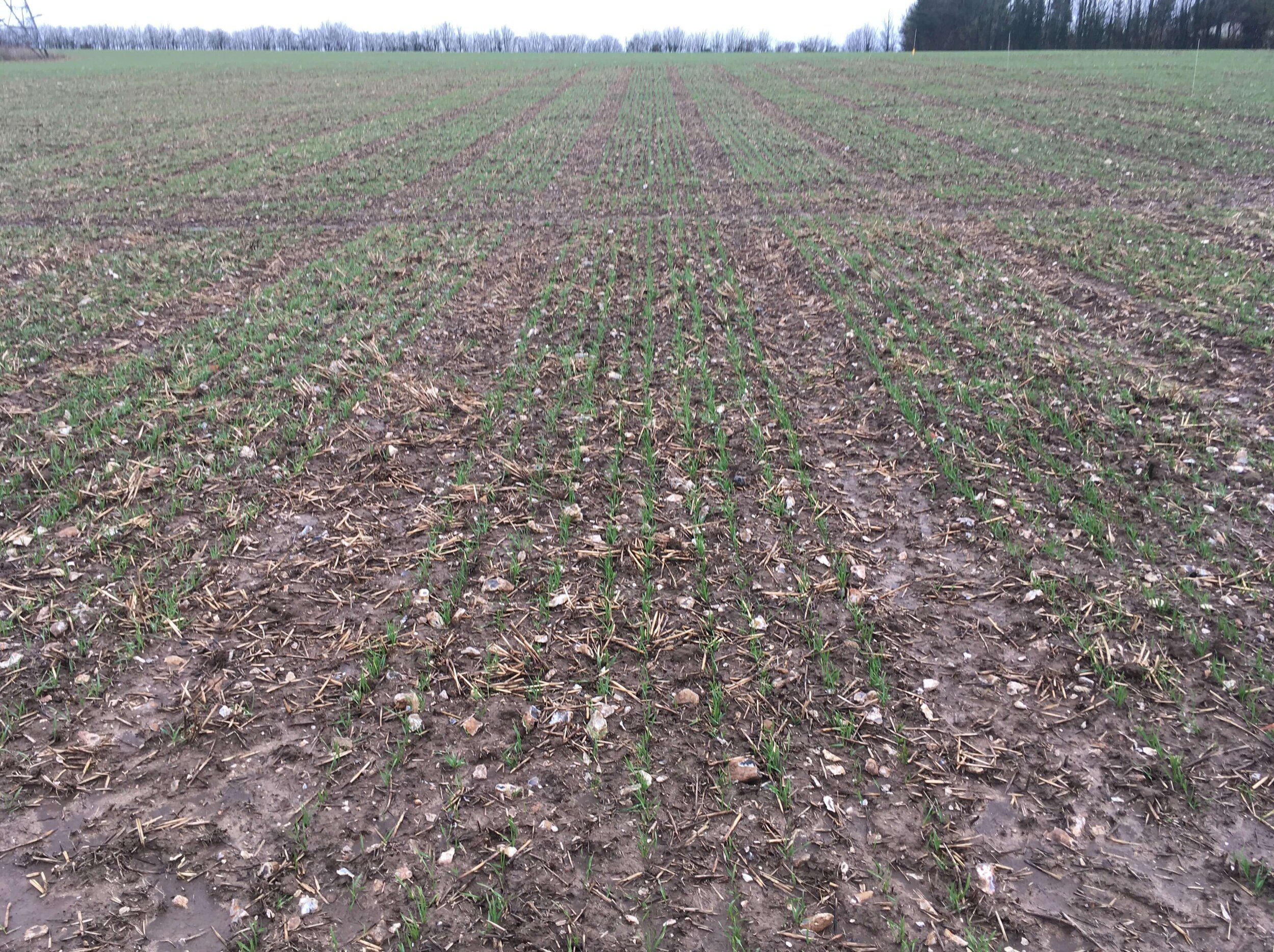Managing a backward crop
It goes without saying that this autumn at the very least was challenging. If you were lucky, you may have got the crop in before the rain or between showers which will have subsequently sat wet for months on end.
Or you will have got the crop in but months later than planned. All these
factors mean that we have a great deal of backward winter cereal crops in the ground right now and going into the spring we need to be thinking about how we change our usual fair weather programmes to tailor them to the crop we have.
The classic backward crop will be several growth stages
behind where you’d expect it to be and have poor rooting, we may therefore need to change our usual strategy. Our initial step could be to try and encourage rooting. We can effectively influence this using PGRs such as Moddus early in the season and can tie in with the T0 application. Other products are also available such as Route and Potentate, these products use a combination of micronutrients and bio-stimulants to aid crop health and rooting.
Another point to mention would be the timing of your first
fungicide spray, usually the foundation on which you build the fungicide
programme. It tends to be simple and aimed at preventing Septoria and rusts. With backwards crops monitoring disease pressure early in the season will be key. If mild, wet conditions continue we could see disease creeping into the lower leaf layers earlier than previous years. It therefore may be necessary to apply a fungicide earlier than the T0 timing (GS30). Product choice and timing should be discussed with your agronomist.
Other factors to consider will be the use of aphicides in vulnerable crops. The mild conditions and lack of frosts indicate that aphids are still breeding which puts crops at risk of BYDV. Therefore, an insecticide in late January or early February depending on threshold levels may still be required. Trapping and in-field monitoring is essential to ensure IPM requirements are met before using any insecticide.
Grass weed strategy will also be affected by a backward
crop. In many cases where the seed has been drilled before Christmas, any pre-emergence application have been put off due to the wet ground making travelling with any machinery impossible. The question therefore is if a post-emergence application containing residual chemistry such as Crystal is to be made or to by-pass the residuals completely by applying contact material such as Atlantis or Hamlet.
Due to label restrictions, a Crystal application after the 31st December would have been illegal, however, the CRD have changed the label to restrict applications based on growth stage rather than calendar date. Under the new label allowances a full rate application of Crystal is permitted up to
GS 23. With these changes you can still have a full dose of residual chemistry in a programme with the contact material if the pre-emergence has been missed. A tough grass weed situation may require a post-emergence application of Crystal followed by an application of contact material later in the spring, this approach will give the best chance of preventing germinating grass weeds from emerging while weakening already emerged grasses ready for the contact application. There may be a range of growth stages across the farm so any application must be made on a field by field bases. Careful consideration must also be made regarding crop stress as the graminicide could cause a phytotoxic response.
If you are unsure about an application, always consult the product label or
your agronomist.
Increased acreage of spring cereals will be inevitable after
the Autumn of 2019 this will therefore mean any winter cereals that have survived will be worth protecting to maximise yield. With a backward crop, field monitoring will be even more important to ensure any agro-chemical applications are made at the right time.
If you have any questions for our team, call 01243 784171 today to speak to an expert. Or email info@bartholomews.co.uk

